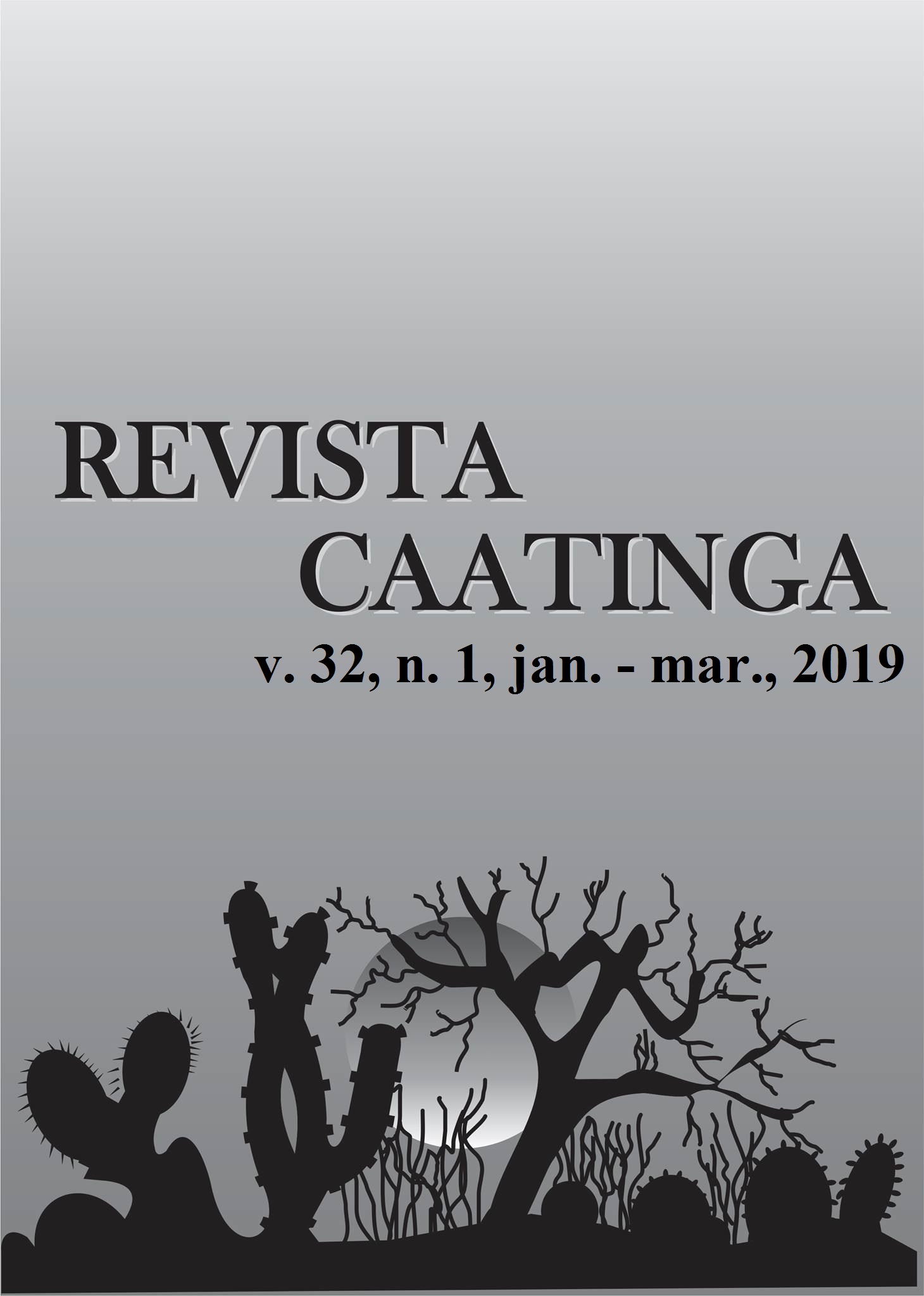GERMINATION AND VIGOUR IN SEEDS OF THE COWPEA IN RESPONSE TO SALT AND HEAT STRESS
DOI:
https://doi.org/10.1590/1983-21252019v32n115rcKeywords:
Vigna unguiculata. Physiological potential. Salinity. Tolerance.Abstract
Salinity is prejudicial to plant development, causing different types of damage to species, or even between genotypes of the same species, with the effects being aggravated when combined with other types of stress, such as heat stress. The aim of this study was to evaluate the tolerance of cowpea genotypes (Vigna unguiculata L. Walp.) to salt stress at different temperatures. Seeds of the Pujante, Epace 10 and Marataoã genotypes were placed on paper rolls (Germitest®) moistened with different salt concentrations of 0.0 (control), 1.5, 3.0, 4.5 and 6.0 dS m-1, and placed in a germination chamber (BOD) at temperatures of 20, 25, 30 and 35°C. The experiment was conducted in a completely randomised design, in a 3 × 4 × 5 scheme of subdivided plots, with four replications per treatment. The variables under analysis were germination percentage, first germination count, shoot and root length, and total seedling dry weight. At temperatures of 30 and 35°C, increases in the salt concentration were more damaging to germination in the Epace 10 and Pujante genotypes, while for the Marataoã genotype, damage occurred at the temperature of 20°C. At 25°C, germination and vigour in the genotypes were higher, with the Pujante genotype proving to be more tolerant to salt stress, whereas Epace 10 and Marataoã were more tolerant to high temperatures. Germination in the cowpea genotypes was more sensitive to salt stress when subjected to heat stress caused by the low temperature of 20°C or high temperature of 35°C.
Downloads
Downloads
Published
Issue
Section
License
Os Autores que publicam na Revista Caatinga concordam com os seguintes termos:
a) Os Autores mantêm os direitos autorais e concedem à revista o direito de primeira publicação, com o trabalho simultaneamente licenciado sob a Licença Creative Commons do tipo atribuição CC-BY, para todo o conteúdo do periódico, exceto onde estiver identificado, que permite o compartilhamento do trabalho com reconhecimento da autoria e publicação inicial nesta revista, sem fins comerciais.
b) Os Autores têm autorização para distribuição não-exclusiva da versão do trabalho publicada nesta revista (ex.: publicar em repositório institucional ou como capítulo de livro), com reconhecimento de autoria e publicação inicial nesta revista.
c) Os Autores têm permissão e são estimulados a publicar e distribuir seu trabalho online (ex.: em repositórios institucionais ou na sua página pessoal) a qualquer ponto antes ou durante o processo editorial, já que isso pode gerar alterações produtivas, bem como aumentar o impacto e a citação do trabalho publicado (Veja O Efeito do Acesso Livre).







